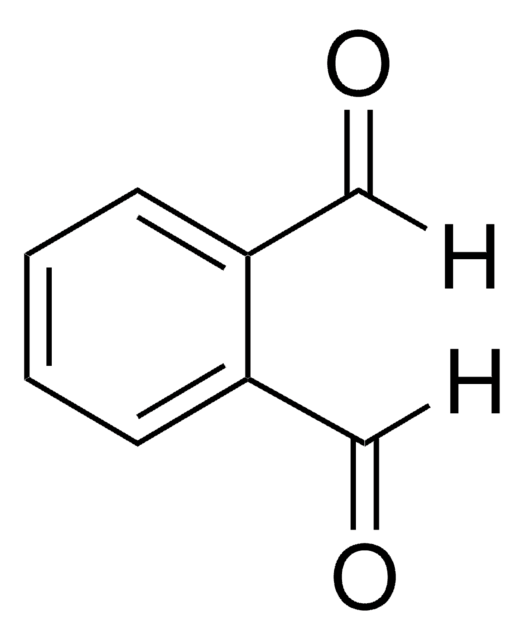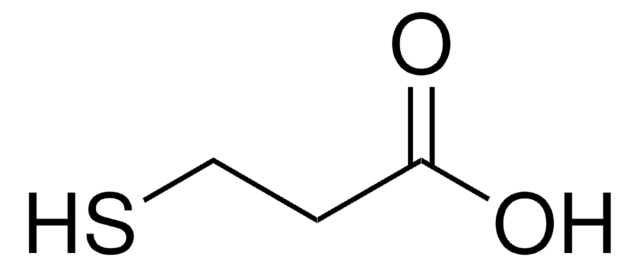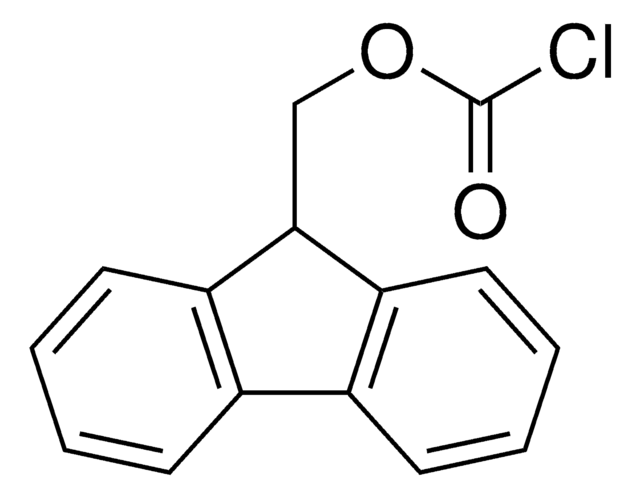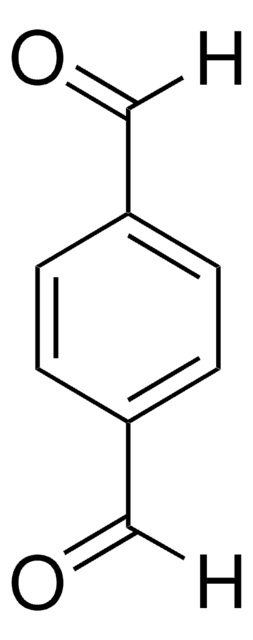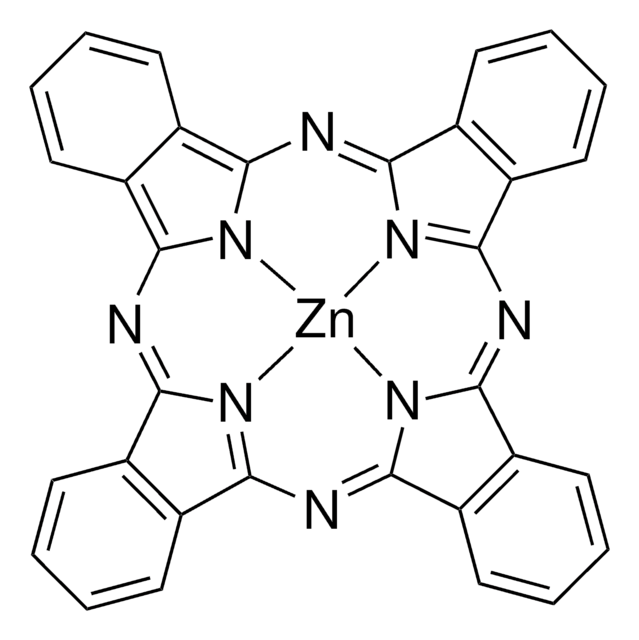8.21027
Phthaldialdehyde
for synthesis
Synonim(y):
Phthaldialdehyde, OPA
About This Item
Polecane produkty
Poziom jakości
Próba
≥97.5% (GC)
Postać
solid
temp. samozapłonu
480 °C
siła działania
178 mg/kg LD50, oral (Rat)
>2000 mg/kg LD50, skin (Rat)
pH
7 (20 °C, 53 g/L in H2O)
tw
83-84 °C/1 hPa
mp
52-58 °C
temp. przejścia
flash point 132 °C
rozpuszczalność
53 g/L
gęstość
1.13 g/cm3 at 20 °C
gęstość nasypowa
530 kg/m3
temp. przechowywania
2-30°C
InChI
1S/C8H6O2/c9-5-7-3-1-2-4-8(7)6-10/h1-6H
Klucz InChI
ZWLUXSQADUDCSB-UHFFFAOYSA-N
Zastosowanie
- An investigation of o-phthaldialdehyde as a derivatization reagent and optimization of instrumental parameters for qualitative amino acid profiling via UPLC-UV Detailed examination of o-phthaldialdehyde′s efficiency in amino acid profiling to enhance diagnostic accuracies for metabolic diseases like AKU and PKU (A Aspö - 2023). Access the study.
- Correlation of the Free Amino Nitrogen and Nitrogen by O-Phthaldialdehyde Methods in the Assay of Beer This research correlates nitrogen content measurements in beer using the o-phthaldialdehyde method, discussing its implications for brewing quality control (L Otama, S Tikanoja, H Kane, S Hartikainen, L Kaski - Date not specified). Access the study.
- Turn-on fluorescence detection of glutathione based on o-phthaldialdehyde-assisted SiO2 particles Investigation into a novel fluorometric method for detecting glutathione in supplements using o-phthaldialdehyde and functionalized silica particles (P Nedeljko, M Turel, A Lobnik - 2018). Access the study.
- Biochemical Measures of Neuropathy-Glutathione Assay (GSH) A study on the biochemical assessment of neuropathy by measuring glutathione levels using o-phthaldialdehyde in a methanol solution, emphasizing the methodology′s sensitivity and reliability (E Feldman - 2019). Access the study.
Komentarz do analizy
Melting range (lower value): ≥ 52 °C
Melting range (upper value): ≤ 56 °C
Identity (IR): passes test
Hasło ostrzegawcze
Danger
Zwroty wskazujące rodzaj zagrożenia
Zwroty wskazujące środki ostrożności
Klasyfikacja zagrożeń
Acute Tox. 3 Oral - Aquatic Acute 1 - Aquatic Chronic 1 - Eye Dam. 1 - Skin Corr. 1B - Skin Sens. 1 - STOT SE 3
Organy docelowe
Respiratory system
Kod klasy składowania
6.1A - Combustible, acute toxic Cat. 1 and 2 / very toxic hazardous materials
Klasa zagrożenia wodnego (WGK)
WGK 3
Temperatura zapłonu (°F)
269.6 °F - closed cup
Temperatura zapłonu (°C)
132 °C - closed cup
Certyfikaty analizy (CoA)
Poszukaj Certyfikaty analizy (CoA), wpisując numer partii/serii produktów. Numery serii i partii można znaleźć na etykiecie produktu po słowach „seria” lub „partia”.
Masz już ten produkt?
Dokumenty związane z niedawno zakupionymi produktami zostały zamieszczone w Bibliotece dokumentów.
Klienci oglądali również te produkty
Nasz zespół naukowców ma doświadczenie we wszystkich obszarach badań, w tym w naukach przyrodniczych, materiałoznawstwie, syntezie chemicznej, chromatografii, analityce i wielu innych dziedzinach.
Skontaktuj się z zespołem ds. pomocy technicznej